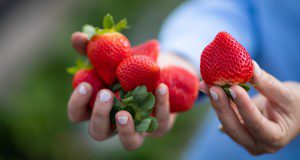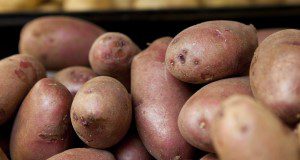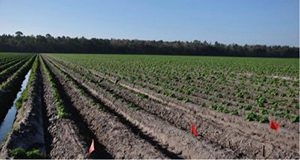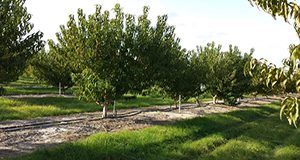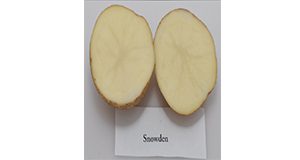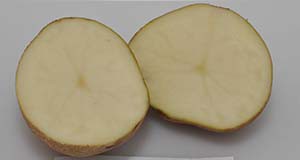Florida es el segundo productor de fresa más grade de los Estados Unidos, con un valor estimado de $337 millones. La siembra inicia entre finales de septiembre y mediados de octubre, en momentos donde las altas temperaturas representan un reto significativo para la sobrevivencia de los trasplantes, y por tanto también para el rendimiento y la calidad. El propósito principal de esta publicación es proporcionar recomendaciones basadas en resultados de investigación sobre métodos de establecimientos de trasplantes para productores de fresas en la Florida.
This new 5-page publication of the UF/IFAS Horticultural Sciences Department is the Spanish translation of HS1376, Methods for Strawberry Transplant Establishment in Florida. Written by Emmanuel Torres-Quezada, Lincoln Zotarelli, Vance M. Whitaker, and Shinsuke Agehara.
https://edis.ifas.ufl.edu/hs1378
Tag: Lincoln Zotarelli
Methods for Strawberry Transplant Establishment in Florida
Florida is the second largest strawberry producer in the United States, with an annual farm gate value of about $300 million. Planting occurs from late September through late October, and high air temperatures pose significant challenges for transplant establishment and thus yield and fruit quality. The primary purpose of this new 4-page publication of the UF/IFAS Horticultural Sciences Department is to provide research-based recommendations on transplant establishment methods for strawberry growers in Florida. The techniques presented are overhead irrigation application methods and practices, strawberry plugs and bare-root transplants, crop protectants, and reflective mulching. Written by Emmanuel Torres-Quezada, Lincoln Zotarelli, Vance M. Whitaker, and Shinsuke Agehara.
https://edis.ifas.ufl.edu/hs1376
Fertigation via Center Pivot Irrigation for Commercial Potato Production in Florida
Potatoes are an important crop in the United States, and Florida is ranked the 7th producer nationwide for potato production. In Florida, potatoes are mainly planted on sandy soils with low nutrient- and water-holding capacities. Nitrogen is the most limiting nutrient in these soils. Adopting efficient fertilization methods such as fertigation is imperative for minimizing leaching and improving use efficiency of nitrogen. This new 12-page article provides step-by-step guidelines for fertigation practices for commercial potato production. Written by Xiangju Fu, Guodong Liu, Lincoln Zotarelli, Steven Sargent, Kati Migliaccio, and Yuncong Li, and published by the UF/IFAS Horticultural Sciences Department.
https://edis.ifas.ufl.edu/hs1361
Seed Piece Spacing Adjustment for Florida Chipping Potato
Seed spacing directly affects crop revenue because the number of potato seeds planted determines the final plant population density. The analysis presented in this 5-page publication was extracted from a series of field trials that looked at improved potato plant arrangement in the field by adjusting seed piece spacing for Florida growing conditions. Written by Fernanda Souza Krupek, Steven A. Sargent, Peter J. Dittmar, and Lincoln Zotarelli and published by the UF/IFAS Horticultural Sciences Department, May 2018.
http://edis.ifas.ufl.edu/hs1317
Irrigation Practices for Peaches in Florida
This 6-page document provides basic information and guidelines on water requirements and irrigation strategies for peaches grown in Florida. Written by C. Zambrano-Vaca, L. Zotarelli, K. Migliaccio, R. Beeson Jr., K. Morgan, J. Chaparro, and M. Olmstead and published by the UF/IFAS Horticultural Sciences Department, April 2018.
http://edis.ifas.ufl.edu/hs1316
Eight New Potato Variety Trials Spotlights
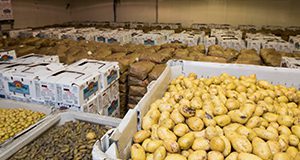
The following eight new potato variety trials spotlights explain the results of the trials and describe the different cultivars. They are published by the Horticultural Sciences Department.
-
HS1293 University of Florida Potato Variety Trials Spotlight: ‘Adirondack Blue’ by Rodrick Z. Mwatuwa, Christian T. Christensen, Pam Solano, and Lincoln Zotarelli
http://edis.ifas.ufl.edu/hs1293 -
HS1294 University of Florida Potato Variety Trials Spotlight: ‘Fabula’ by Rodrick Z. Mwatuwa, Chrsitian T. Christensen, Pam Solano, and Lincoln Zotarellia
http://edis.ifas.ufl.edu/hs1294 -
HS1295 University of Florida Potato Variety Trials Spotlight: ‘Peter Wilcox’ by Rodrick Z. Mwatuwa, Christian T. Christensen, Pam Solano, Kathleen G. Haynes, and Lincoln Zotarelli
http://edis.ifas.ufl.edu/hs1295 -
HS1296 University of Florida Potato Variety Trials Spotlight: ‘Yukon Gold’ by Rodrick Z. Mwatuwa, Christian T. Christensen, Pam Solano, and Lincoln Zotarelli
http://edis.ifas.ufl.edu/hs1296 -
HS1297 University of Florida Potato Variety Trials Spotlight: ‘LaChipper’ by Rodrick Z. Mwatuwa, Christian T. Christensen, Pam Solano, and Lincoln Zotarelli
http://edis.ifas.ufl.edu/hs1297 -
HS1298 University of Florida Potato Variety Trials Spotlight: ‘Harley Blackwell’ by Rodrick Z. Mwatuwa, Christian T. Christensen, Pam Solano, Kathleen G. Haynes, and Lincoln Zotarelli
http://edis.ifas.ufl.edu/hs1298 - HS1299 University of Florida Potato Variety Trial Spotlight: ‘Goldrush’ by Rodrick Z. Mwatuwa, Christian T. Christensen, Pam Solano, and Lincoln Zotarelli http://edis.ifas.ufl.edu/hs1299
-
HS1300 University of Florida Potato Variety Trials Spotlight: ‘French Fingerling’ by Rodrick Z. Mwatuwa, Christian T. Christensen, Pam Solano, and Lincoln Zotarelli
http://edis.ifas.ufl.edu/hs1300
University of Florida Potato Variety Spotlight: Snowden
This five-page fact sheet describes a new University of Florida potato variety named Snowden. ‘Snowden’ is a potato variety that is commonly grown for the potato chip market. It was named and released in 1990 from the University of Wisconsin’s Lelah Starks Potato Breeding Farm in Rhinelander, WI. Tuber production and quality results provided in this spotlight are summarized from various variety trials conducted by the University of Florida’s Hastings Agricultural and Extension Center from 1998 to 2015. Written by Rodrick Z. Mwatuwa, Christian T. Christensen, and Lincoln Zotarelli and published by the Horticultural Sciences Department.
http://edis.ifas.ufl.edu/hs1286
Creciendo Papas en el Jardín de su Hogar en la Florida
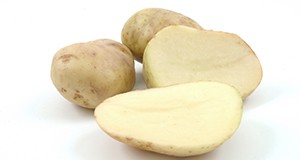
The Irish potato is a cool-season crop. A recently grown and harvested potato exhibits different flavor profiles from one that has been in storage or on a grocery shelf for an extended period. For example, in storage, the starches in potatoes convert to sugars, resulting in a less desirable texture and taste. “New” potato flavor can be achieved in the home garden by following a few growing recommendations. This is ten-page fact sheet is the Spanish language version of HS933 Growing Potatoes in the Florida Home Garden. Written by Christian T. Christensen, Joel Reyes-Cabrera, Lincoln Zotarelli, Wendy J. Dahl, Doug Gergela, Jeffery E. Pack, James M. White, and Chad M. Hutchinson.
http://edis.ifas.ufl.edu/hs1282
University of Florida Potato Variety Spotlight: 'Atlantic'
This article introduces the potato variety, ‘Atlantic’, which was tested in trials at the University of Florida.’Atlantic’ is a white-skinned, chipping potato commonly cultivated in Florida and resealed as a white mutant of the USDA breeding program. This three-page fact sheet provides the general characteristics, season length and growth information, fertilization and planting instructions, as well as disease information for the potato variety, ‘Atlantic’. Written by Rodrick Z. Mwatuwa, Christian T. Christensen, and Lincoln Zotarelli, and published by the Horticultural Sciences Department.
http://edis.ifas.ufl.edu/hs1278
University of Florida Potato Variety Spotlight: ‘Marcy’
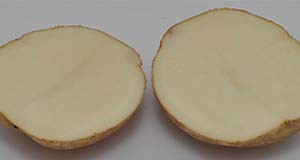
This article introduces the potato variety, ‘Marcy’, which was developed at the University of Florida. ‘Marcy’ is a white-flesh and white-skinned fresh-market potato variety that has demonstrated high yield and good tuber characteristics. This three-page fact sheet provides the general characteristics, season length and growth information, fertilization and planting instructions, as well as disease information for the potato variety, ‘Marcy’.
Written by Rodrick Z. Mwatuwa, Christian T. Christensen, and Lincoln Zotarelli, and published by the Horticultural Sciences Department.
http://edis.ifas.ufl.edu/hs1277
Potato Vine Killing or Desiccation

Proper tuber maturity at harvest is an important factor in producing high-quality fresh-market potatoes. Tuber maturity is generally recognized as an important determinant of storage ability and cooking quality. Maturation can be artificially induced by killing the potato vines prior to harvest. This will benefit tuber appearance, limit tuber size, and improve tuber release from the vine. This four-page fact sheet describes the importance of tuber maturation, potato vine killing timing and available methods, and how to determine when to vine kill and when to harvest after vine kill. Written by Lincoln Zotarelli, Steven Sargent, Peter Dittmar, and Mildred Makani, and published by the Horticultural Sciences Department.
http://edis.ifas.ufl.edu/hs181
What is 4R nutrient stewardship?
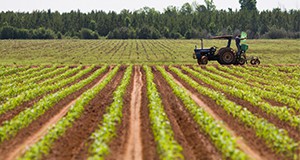
A new and innovative approach to Best Management Practices for fertilizer application known as 4R nutrient stewardship is available, to ensure the environmental, social, and economical sustainability of commercial crop production. This 3-page fact sheet focuses on the basic concepts of the 4R nutrient stewardship principles for commercial crop production. Written by Guodong Liu, Kelly Morgan, Yuncong Li, Lincoln Zotarelli, James DeValerio, and Qingren Wang, and published by the UF Department of Horticultural Sciences, July 2015.
http://edis.ifas.ufl.edu/hs1264
SmartIrrigation Avocado App: A Step-by-Step Guide
 UF’s SmartIrrigation Avocado for iOS and Android platforms provides a simple ET-based method to schedule irrigation and is expected to provide 20% to 50% water savings based on findings with other schedule tools. This 6-page fact sheet provides configuration instructions and main menu features. Written by D. Mbabazi, K. W. Migliaccio, J. H. Crane, J. H. Debastiani Andreis, C. Fraisse, L. Zotarelli, and K. T. Morgan, and published by the UF Department of Agricultural and Biological Engineering, May 2015.
UF’s SmartIrrigation Avocado for iOS and Android platforms provides a simple ET-based method to schedule irrigation and is expected to provide 20% to 50% water savings based on findings with other schedule tools. This 6-page fact sheet provides configuration instructions and main menu features. Written by D. Mbabazi, K. W. Migliaccio, J. H. Crane, J. H. Debastiani Andreis, C. Fraisse, L. Zotarelli, and K. T. Morgan, and published by the UF Department of Agricultural and Biological Engineering, May 2015.
http://edis.ifas.ufl.edu/ae513
Controlled-Release and Slow-Release Fertilizers as Nutrient Management Tools
 There are many fertilizer sources available for commercial crop production. The characteristics of each fertilizer type determine whether its use poses an advantage or a disadvantage to a farmer. This 6-page fact sheet focuses on how to select the right fertilizer to enhance profitability and satisfy best management practices (BMPs). Written by Guodong Liu, Lincoln Zotarelli, Yuncong Li, David Dinkins, Qingren Wang, and Monica Ozores-Hampton, and published by the UF Department of Horticultural Sciences, October 2014. (UF/IFAS Photo by Thomas Wright)
There are many fertilizer sources available for commercial crop production. The characteristics of each fertilizer type determine whether its use poses an advantage or a disadvantage to a farmer. This 6-page fact sheet focuses on how to select the right fertilizer to enhance profitability and satisfy best management practices (BMPs). Written by Guodong Liu, Lincoln Zotarelli, Yuncong Li, David Dinkins, Qingren Wang, and Monica Ozores-Hampton, and published by the UF Department of Horticultural Sciences, October 2014. (UF/IFAS Photo by Thomas Wright)
http://edis.ifas.ufl.edu/hs1255
Factors Affecting the Choice of Irrigation Systems for Florida Tomato Production
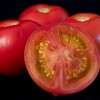 Several economic factors should be considered in selecting an agricultural irrigation system. This 7-page fact sheet compares two widely used irrigation systems for tomato production: seepage and sub-surface drip irrigation. Written by Jenna Rogers, Tatiana Borisova, Jeffrey Ullman, Kelly Morgan, Lincoln Zotarelli, and Kelly Grogan, and published by the UF Department of Food and Resource Economics, October 2014. (UF/IFAS Photo: Tyler Jones)
Several economic factors should be considered in selecting an agricultural irrigation system. This 7-page fact sheet compares two widely used irrigation systems for tomato production: seepage and sub-surface drip irrigation. Written by Jenna Rogers, Tatiana Borisova, Jeffrey Ullman, Kelly Morgan, Lincoln Zotarelli, and Kelly Grogan, and published by the UF Department of Food and Resource Economics, October 2014. (UF/IFAS Photo: Tyler Jones)
http://edis.ifas.ufl.edu/fe960
Converting from seepage irrigation to plasticulture for vegetable production: a case study and on-farm demonstration
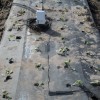 Cabbage production in Florida has been dominated by the use of seepage or sub-irrigation, because it is inexpensive to maintain and simple to use, but it can require vast quantities of water to be pumped from the aquifer in low rainfall years. Plasticulture has been proposed as an alternative production method for cabbage production in Florida. An on-farm demonstration was setup on Greene’s Farms in Bunnell, FL to provide a platform for collaboration between researchers, growers and extension professionals. This 6-page fact sheet illustrates an innovative approach converting from seepage irrigation to plasticulture and points out some options and challenges for growers considering a plasticulture system. Written by Charles E. Barrett, Lincoln Zotarelli, Brian S. Taylor, Lucas G. Paranhos, and Mark Warren, and published by the UF Department of Horticultural Sciences, July 2014.
Cabbage production in Florida has been dominated by the use of seepage or sub-irrigation, because it is inexpensive to maintain and simple to use, but it can require vast quantities of water to be pumped from the aquifer in low rainfall years. Plasticulture has been proposed as an alternative production method for cabbage production in Florida. An on-farm demonstration was setup on Greene’s Farms in Bunnell, FL to provide a platform for collaboration between researchers, growers and extension professionals. This 6-page fact sheet illustrates an innovative approach converting from seepage irrigation to plasticulture and points out some options and challenges for growers considering a plasticulture system. Written by Charles E. Barrett, Lincoln Zotarelli, Brian S. Taylor, Lucas G. Paranhos, and Mark Warren, and published by the UF Department of Horticultural Sciences, July 2014.
http://edis.ifas.ufl.edu/hs1246
Growth Stages and Tuber Development of FL1867 Potato under Full and Reduced Irrigation Scheduling
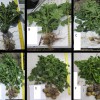 The potato cultivar ‘Frito Lay 1867’ (‘FL 1867’) is a popular chipping variety grown across Florida and the southern United States. Knowledge of the timing and duration of the tuber initiation and tuber bulking stages for ‘FL 1867’ is critical for timing fertilizer and irrigation applications. So to evaluate the start and length of the tuber initiation and tuber bulking stages under Florida growing conditions, ‘FL 1867’ plants were dug up and photographed on a weekly basis from a commercial field near Live Oak, FL in 2012. This 3-page fact sheet was written by Seth A. Byrd, Diane L. Rowland, and Lincoln Zotarelli, and published by the UF Department of Agronomy, September 2014.
The potato cultivar ‘Frito Lay 1867’ (‘FL 1867’) is a popular chipping variety grown across Florida and the southern United States. Knowledge of the timing and duration of the tuber initiation and tuber bulking stages for ‘FL 1867’ is critical for timing fertilizer and irrigation applications. So to evaluate the start and length of the tuber initiation and tuber bulking stages under Florida growing conditions, ‘FL 1867’ plants were dug up and photographed on a weekly basis from a commercial field near Live Oak, FL in 2012. This 3-page fact sheet was written by Seth A. Byrd, Diane L. Rowland, and Lincoln Zotarelli, and published by the UF Department of Agronomy, September 2014.
http://edis.ifas.ufl.edu/ag388
University of Florida Potato Variety Trial Program: 'Elkton' Commercial Evaluation
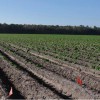 The ‘Elkton’ chipping potato variety was tested on a commercial scale at two growers’ farms in Florida during the 2011 season. The average yield of ‘Elkton’ in the commercial trials ranged between 295 and 324 cwt/ac, an average of 11 percent higher than that of the standard ‘Atlantic,’ and comparable to the yield range obtained in 19 trials conducted over a nine-year period by the University of Florida. This 4-page fact sheet was written by Lincoln Zotarelli, Douglas Gergela, and Dana Fourman, and published by the UF Department of Horticultural Sciences, October 2014.
The ‘Elkton’ chipping potato variety was tested on a commercial scale at two growers’ farms in Florida during the 2011 season. The average yield of ‘Elkton’ in the commercial trials ranged between 295 and 324 cwt/ac, an average of 11 percent higher than that of the standard ‘Atlantic,’ and comparable to the yield range obtained in 19 trials conducted over a nine-year period by the University of Florida. This 4-page fact sheet was written by Lincoln Zotarelli, Douglas Gergela, and Dana Fourman, and published by the UF Department of Horticultural Sciences, October 2014.
http://edis.ifas.ufl.edu/hs1253
Costs and Benefits of More Efficient Irrigation Systems for Florida Chipping Potato Production
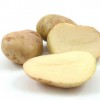 The goal of this 11-page fact sheet is to help producers and other interested parties understand how alternative irrigation systems can affect economic outcomes in agricultural operations. We used chipping potato production in the Hastings area in northeast Florida as an example to discuss factors to consider when selecting an irrigation system. Written by Jenna Rogers, Tatiana Borisova, Lincoln Zotarelli, Kelly Grogan, Jeffrey Ullman, Jessica Bertine, and Kelly Morgan, and published by the UF Department of Food and Resource Economics, September 2014.
The goal of this 11-page fact sheet is to help producers and other interested parties understand how alternative irrigation systems can affect economic outcomes in agricultural operations. We used chipping potato production in the Hastings area in northeast Florida as an example to discuss factors to consider when selecting an irrigation system. Written by Jenna Rogers, Tatiana Borisova, Lincoln Zotarelli, Kelly Grogan, Jeffrey Ullman, Jessica Bertine, and Kelly Morgan, and published by the UF Department of Food and Resource Economics, September 2014.
http://edis.ifas.ufl.edu/fe953
University of Florida Potato Variety Spotlight: 'Elkton'
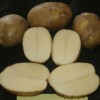 'Elkton' is a white-flesh potato variety suitable for chipping directly from the field. 'Elkton' was selected from the USDA-ARS breeding program in Beltsville, Maryland, by Dr. Haynes in 1997. In 2003, seed of 'Elkton' was made available for field evaluation under Florida growing conditions. In 19 trials conducted between 2003 and 2012, 'Elkton' yielded 111% in comparison with 'Atlantic'. In these trials, 'Elkton' demonstrated resistance to internal heat necrosis and hollow heart, which are common tuber physiological disorders under high-temperature growing conditions. This 3-page fact sheet was written by Lincoln Zotarelli, Douglas Gergela, Kathleen Haynes, and Dana Fourman, and published by the UF Department of Horticultural Sciences, April 2014.
'Elkton' is a white-flesh potato variety suitable for chipping directly from the field. 'Elkton' was selected from the USDA-ARS breeding program in Beltsville, Maryland, by Dr. Haynes in 1997. In 2003, seed of 'Elkton' was made available for field evaluation under Florida growing conditions. In 19 trials conducted between 2003 and 2012, 'Elkton' yielded 111% in comparison with 'Atlantic'. In these trials, 'Elkton' demonstrated resistance to internal heat necrosis and hollow heart, which are common tuber physiological disorders under high-temperature growing conditions. This 3-page fact sheet was written by Lincoln Zotarelli, Douglas Gergela, Kathleen Haynes, and Dana Fourman, and published by the UF Department of Horticultural Sciences, April 2014.
http://edis.ifas.ufl.edu/hs1237
